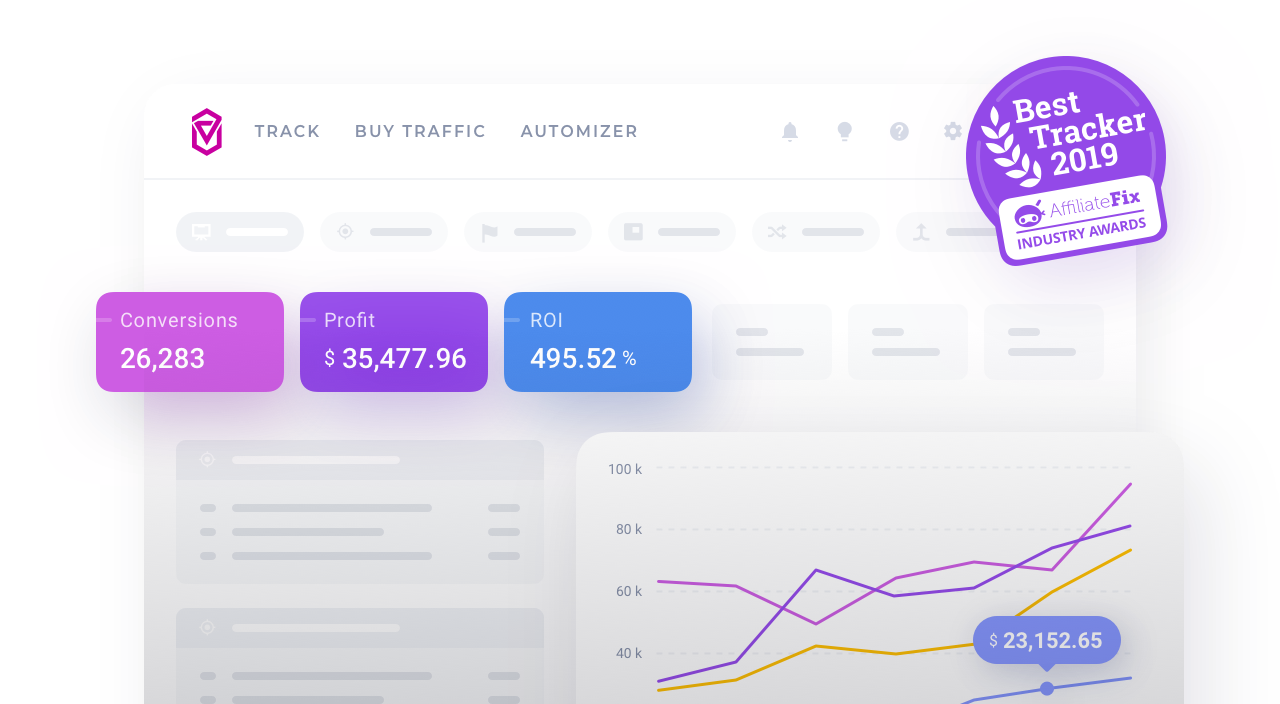Honeypot
Honeypot is a tool that was specifically designed to lure bots into clicking fake links and count traffic that they generated. You can identify heavily bot-infested campaigns and block them in your traffic source's platform setup. Using Honeypot is easy and requires minimal technical knowledge.

Voluum Note: Due to technical aspects of the direct method of tracking, you cannot use Honeypot in campaigns tracked with this method. Honeypot is applicable for campaigns tracked with a redirect method of tracking only.
How Does It Work?
The Honeypot feature generates a unique script that has to be implemented into your landing page's HTML. When a landing page loads, this script creates a link that is not visible for a human visitor, but can be scanned and activated by bots. Because this Honeypot link is typically scanned first, bots tend to activate it and not the actual link (click URL). The Honeypot link still directs to an offer page and its activation is counted as a click, but this clicked is also flagged and marked as suspicious, which can be seen in the Anti-Fraud Details view.

I. Get the Honeypot Script
If you have the Honeypot tool activated on your account, you can use it in your fight against bots. First, you need to get the Honeypot script. In order to do so, perform the following steps:
- In Voluum, go to the Advanced module.
-
Go to the Anti-Fraud Kit tab.

- In the Honeypot section select the domain that you use in your campaign funnel with this landing page (dedicated or custom) from the drop-down menu.
-
Copy the Honeypot script by clicking the Copy button.

The Honeypot script has been copied to the clipboard. Proceed to the next part of this guide to learn how to implement it to your landing page.
II. Implement the Script on Your Landing Page
Once you get your script, go to your landing page and edit the page's HTML code. The Honeypot script has to be implemented right after the <body> tag. Your landing page's HTML code should look like this:
<body> <script>AFKClickUrl="http://voluum_dedicated_domain.com/click";</script> <script async src="https://script.com/script.js"></script> . . . </body>
Keep in mind the following rules of using the Honeypot script:
- Put the Honeypot script before any link to your offer page. It will work better this way.
- Do not use Google Tag Manager to manage this script because that way it will not be scanned by bots.
- Do not use this script with the direct tracking feature. The lander tracking script on a landing page will prevent the Honeypot script from working.
-
Double check if the link in the first line of the script is the same as your click URL to avoid domain mismatch.
AFK script:

Click URL:

Once you save your changes you can go back to Voluum to observe the numbers of invisible clicks generated on your landing page. Read the next part of the following guide to learn where to find this information.
III. View the Number of Invisible Clicks
Voluum shows you the number of invisible clicks in the Anti-fraud details pop-up window. In order to get there, perform the following steps:
- In Voluum, in global reports view, select an element that you want to see details for.
-
Click the Anti-fraud details button.

-
The Details for campaign element pop-up window shows you the number of invisible clicks that are most likely of bot origin.

Frequently Asked Questions
Have more questions? You might find answers below:
How I can configure Honeypot on my landing page?
Honeypot is a feature that allows you to manage certain types of bots. It works by placing an invisible link on a landing page that is activated by simple bots that scan websites for links. Activations of such links are counted as Invisible Clicks in Voluum. Honeypot allows you to keep your data clean and measure the size of your bot problem. To use Honeypot, grab the Honeypot script from Settings / Anti-Fraud Kit, It should look something like this:
Then implement the link right after the <body> tag of your landing page.


